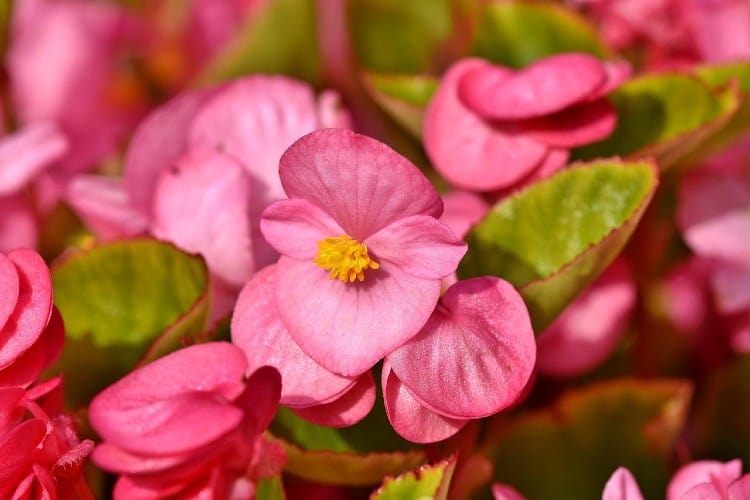If your cat has recently eaten this beautiful plant or if you are wondering if begonias are a safe addition to add to your home or garden when you own a cat, it is important to know that this flowering plant is mildly toxic to cats.
Begonias are a variety of flowering plants that are often planted in flowerbeds and have an alluring appearance. However, this attractive plant is surprisingly toxic to cats if it is eaten—just a small amount of the begonia plant being consumed can cause discomfort and symptoms of toxicity in your cat.
This article has all the information you need to know on the toxicity of begonias in cats and what you should do if you suspect that your cat has eaten any.
Are Begonias Poisonous to Cats?
Yes, this popular flowering plant contains large amounts of a toxic substance known as oxalate. If your cat has ingested a part of this plant, the oxalate crystals start to break down into oxalic acid which embeds itself into the tissue of your cat and causes irritation. Since this is an irritant, your cat’s body will try to get rid of this substance from the digestive tract, which can cause excess salivation as the body attempts to dilute the substance along with vomiting.
Even if your cat’s body tries to rid this toxin from your cat’s body, some form of oxalic acid will make its way into your cat’s liver, which can take its toll. If a large amount of this substance is accumulated in your cat’s liver, then it can induce potential liver failure which needs immediate veterinary treatment. This scenario is most likely to happen if your cat frequently consumes begonias or if they have eaten a significantly large amount of this plant, though.
Symptoms of begonia poisoning:
- Inability to swallow
- Mouth sores
- Facial and mouth swelling
- Irritation around the mouth
- Excessive salivation
- Vomiting
- Loss of appetite
- Dehydration
- Mouth burning
A veterinarian can run various tests to make a proper diagnosis and find the exact type of substance that could cause your cat to show these symptoms, which is likely the oxalic acid that is in your cat’s bloodstream.
If you notice that your cat has eaten begonias, then it is important to tell your veterinarian immediately to make treatment more effective.

What to Do If Your Cat Has Eaten a Begonia
Fortunately, most cats will not eat much of this plant because it does not taste good, and the immediate vomiting and excessive salivation can help dilute this toxic substance in their bodies. This means that your cat will usually suffer from mild poisoning, which is not usually fatal if diagnosed early and treated. Cats are also carnivores and do not intentionally seek out plant matter to eat unless they are curious as to how it tastes.
If your cat has eaten begonias, the first step is to take them to a veterinarian who will be able to treat your cat with medication and help limit the number of oxalate crystals that are lodged in your digestive system, so that it is not broken down further into oxalic acid. Some vets will also put your cats on fluids to help prevent dehydration.
Oxalate crystals in your cat’s digestive system will soon lose their potency, making it less likely to release oxalic acid. This is why it’s important to get your cat to a veterinarian as soon as you notice any abnormal behaviors and possible poisoning.
The veterinarian can help remove these oxalate crystals to prevent the oxalic acid from being released and directly impacting the cat’s liver.
Conclusion
Since begonias are toxic to cats, it is important to not grow this plant and other toxic species around your cat. There are plenty of other non-toxic flowering plants that you can grow safely around a cat instead.
That said, the overall recovery period for a cat who has begonia poisoning is short and can easily be resolved with the help of a veterinarian. The vet may want to book follow-up appointments to check how much oxalic acid is still left in your cat’s bloodstream to determine how it will affect their liver in the future.
Featured Image Credit: Pixabay














